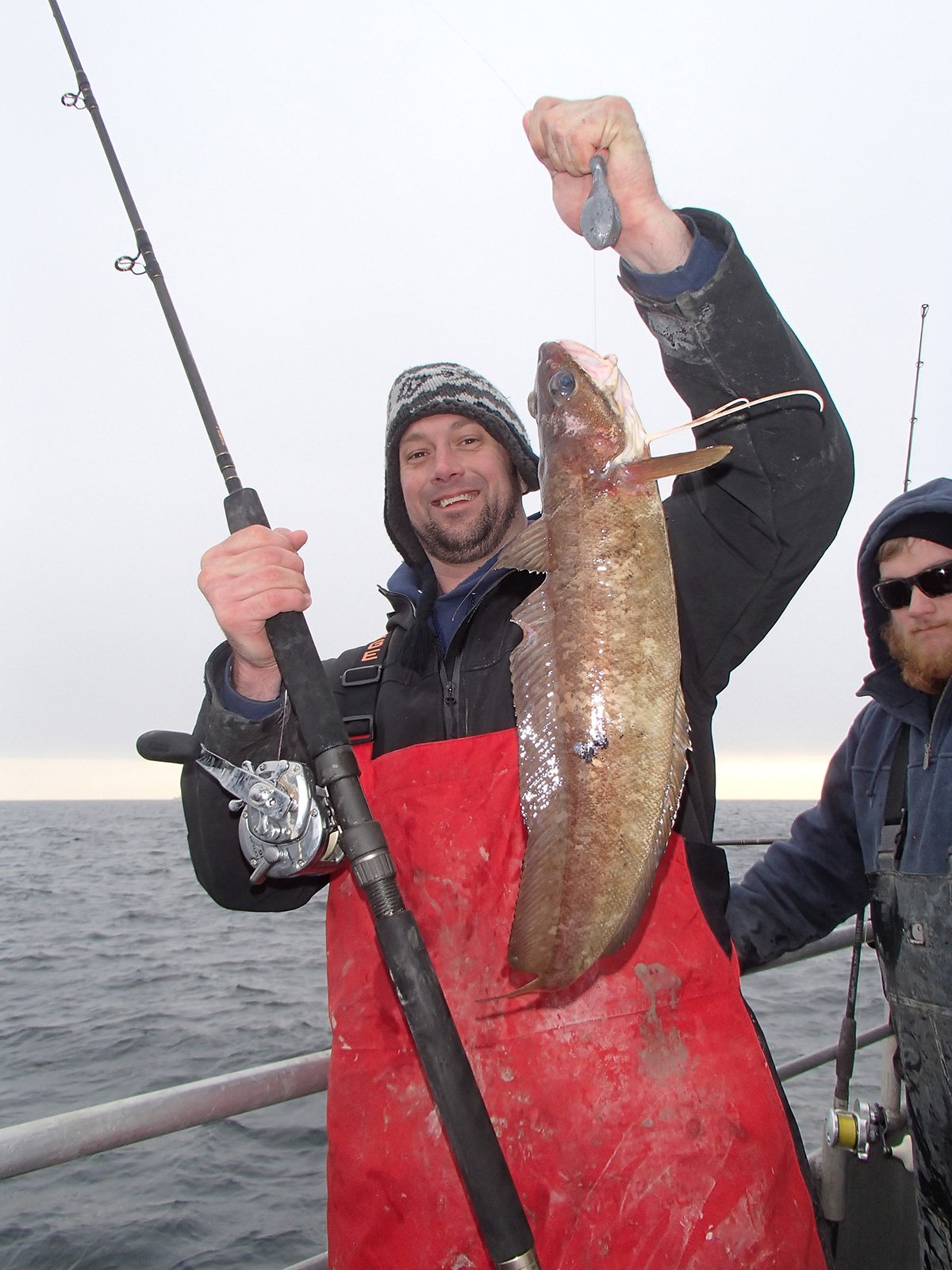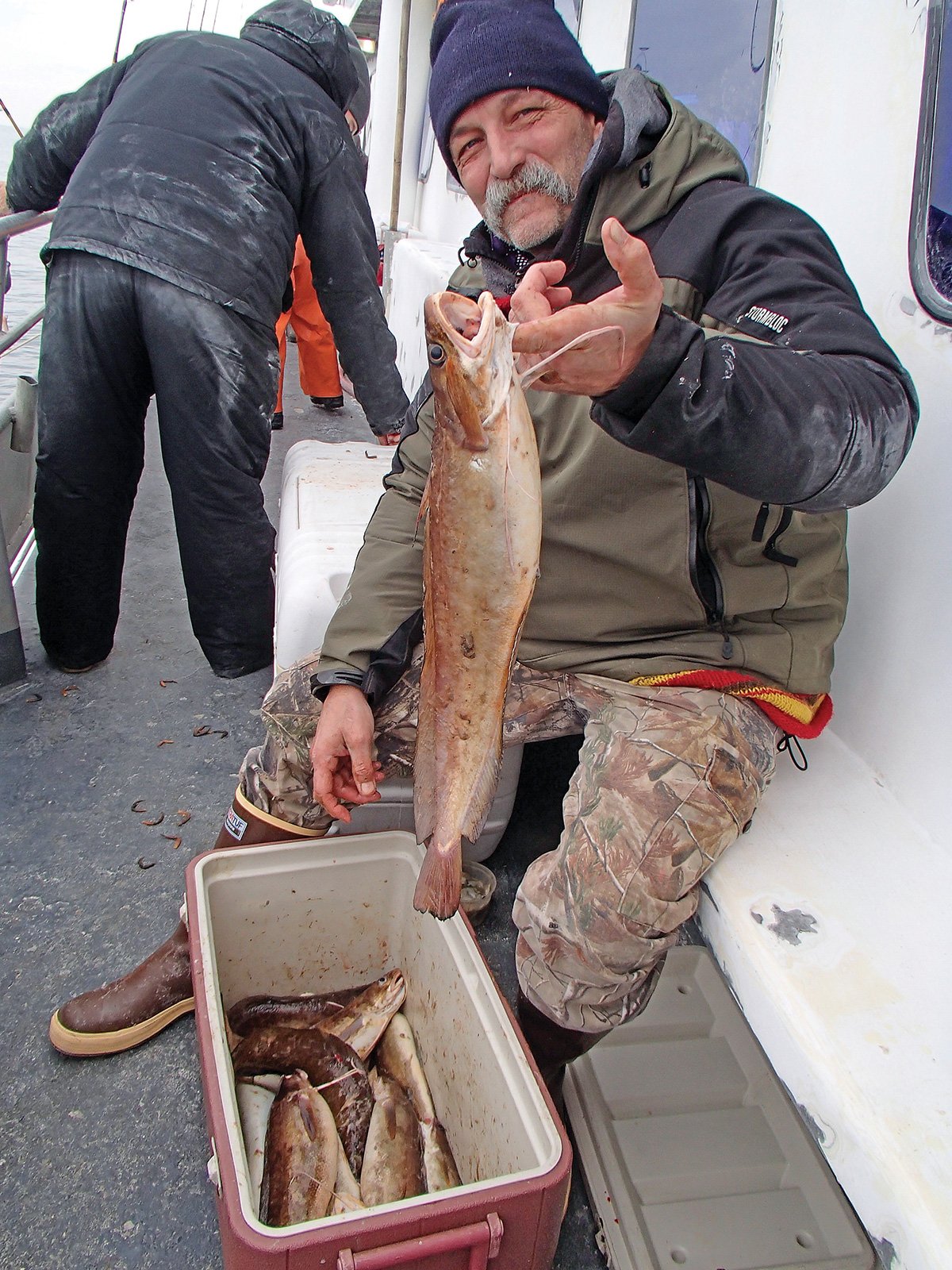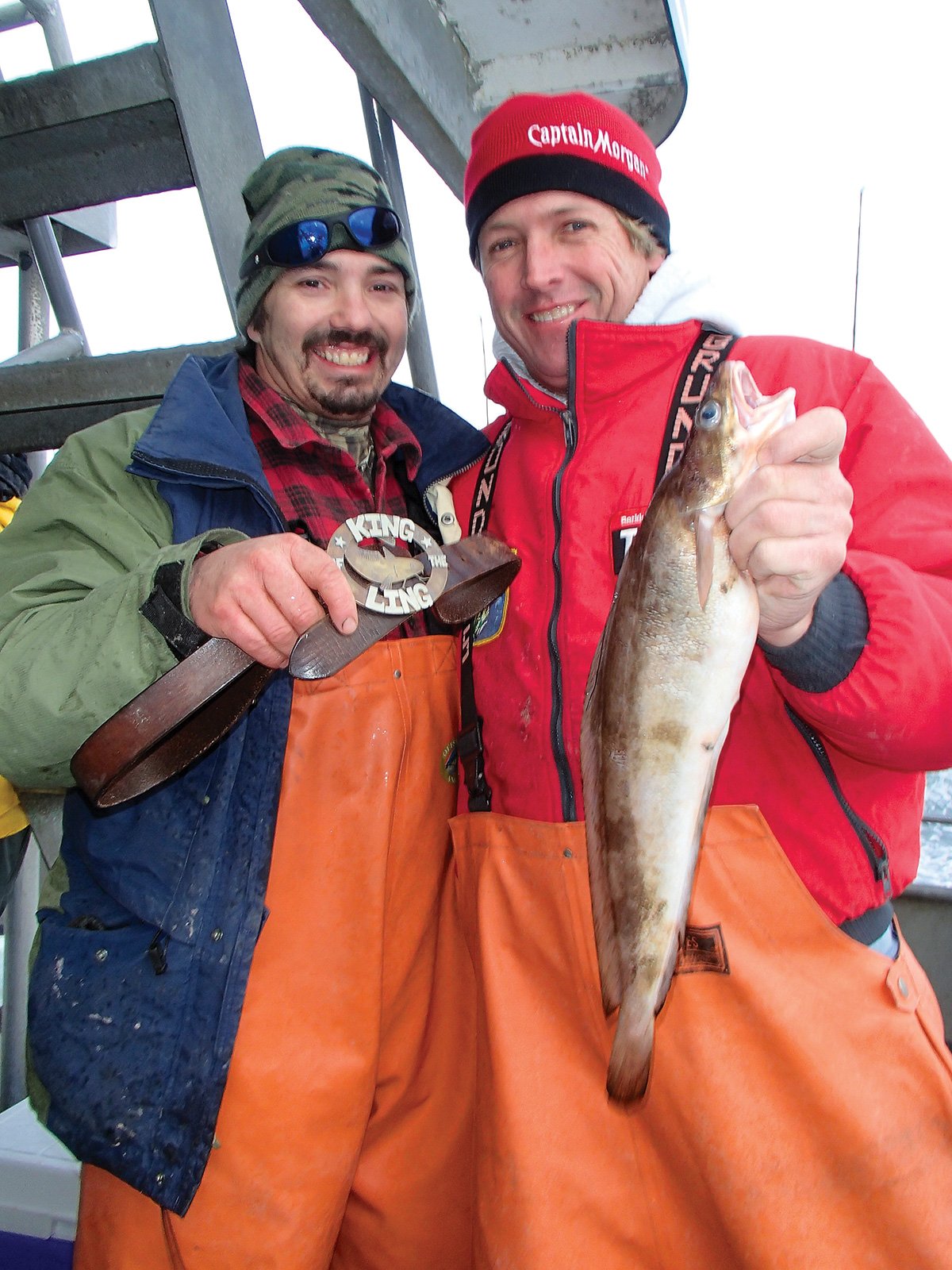
As they make up more of the winter bottom fishing catch off Block Island, a veritable ling sharpie divulges some of his many secrets learned over the years.
Fishing for ling. It started out as kind of a joke amongst my hardcore angling buddies, mainly to fish for something during the frigid, snowy winter months. We called it the “King of the Ling” tournament and whoever caught the largest ling of the trip won the belt—a coveted brass and silver ling silhouetted championship adorned piece of exquisite jewelry, sewn together on a leather strap belt with 65-pound braided line. A glorious prize for sure. After a few competitive trips passing the belt around, we all realized that we were filling coolers full of some truly tasty fish, and then the joke was on us. Ling fishing totally reeled us in, and serious winter trips were then planned twice a month during winter. Though cod and pollock get the “oooohs” and “aaaahs” for the pictures and bragging rights, the anchor of the wintertime bottom fishery rests on the shoulders of the aesthetically-challenged critter with bottom-feeling barbels, where anglers can fill coolers of fish with general catches of 10 to 50 per man.
Homely Critters
Ling, aka red hake are easily identified by their auburn, reddish-yellow color, a toothless mouth, and generally average between 1 and 4 pounds, but true “Louisville Slugger baseball bats” of 4 to 7 pounds can be caught on any day out. Close cousins of red hake are the purple hake and white hake, both of which can be found in the same areas, albeit rarely, and those two species are generally larger in stature, averaging in the 6- to 20-pound bracket and are more defined by a purplish hue and actual small teeth. But let’s get back to ling. Generally, ling tend to lie down and around structures that seem to lay in muddier bottoms. In New York Bight, where I do most of my ling fishing, the Mud Hole area wrecks are prime targets to hold thousands of the affable creatures, but the waters off Block Island where the winter cod fishery off of eastern Long Island is centered also hold large quantities of these ugly-yet-tasty creatures.
Ling stick to the bottom so low lying structure is preferred, as are rockpiles, rubble piles and areas of glacial rock. Red hake feed directly on the bottom on a variety of crabs, mollusks, shrimp, sea mouse, squid, clams and small juvenile fish. Populating near-shore wrecks and reefs, coolers can be filled with catches from 15- to 60-fish per man in 100 to 150 feet of water in January, but the hordes of ling tend to move deeper in February and March.
Baiting Up
Ling are equipped with two barbell feelers underneath their chin, a telling sign that they feed right on the bottom, thus, it’s best to have a rig lying flat on the seafloor. A standard two-hook rig works best to bring up the feisty scrappers. Here’s the key rig: from your braided line, tie an Albright knot then a 15-foot section of 40-pound monofilament leader. Off your 40-pound leader, tie a double overhand knot. Loop on an appropriate size bank sinker (6 to 12 ounces) to hold bottom. Pinch the line 6 inches up from the sinker and loop on a sticky-sharp snelled 2/0 Gamakatsu baitholder or octopus hook through its own snell loop and secure by tying an overhand knot with the bank sinker behind the snell to lock it in. Repeat the process tying another snelled hook tied halfway up on the snell of the original hook so that two baits lay directly on the bottom. For bait, small bits of clam work well to take most fish.
One compatriot of mine always thinks he’s sneaking one by me, but he religiously sprays his bucket of clam baits with WD-40 before he puts them on the hook, and I must say, I do see him pulling in a lot of ling. While party boats usually supply salted clams, buy up a bunch of fresh clams in the shell at your local tackle shop and shuck them on the boat for even better baits. To truly up your advantage on landing a Legendary Ling, bait your hooks with a 3- to 5-inch strips of bergall, sea robin or mackerel. Strip baits seem to attract bigger ling, and no matter what bait you throw down, always lance on a 3-inch Berkley Gulp! swimmin’ mullet in white or chartreuse coloring. The Gulp! baits are resilient, attractive, can take the beating and stay on the hook, giving you reassurance when contemplating the conundrum of checking bait after a hit or two.

Dropping Down
Your rod and reel should be of regular winter bottom fishing capability, with hi-speed retrieve and enough backbone to hoist a large fish. I employ the use of a Lamiglas 7040CT or Fin-Nor Tidal Series, rated 20- to 40-pound, matched with a Shimano Torium 20 reel with a 6:1 ratio spooled with 50-pound Power Pro green braid. Ling aren’t known for their vicious rod-bending fights, as once you get them about 30 feet off the bottom, their air bladders pop out as they give up the battle, but they will give the bait a good initial whack, and a 3-pound-plus ling definitely gives you a little jolt when reeling it in.
You’ll find that large ling tend to hunker down in the nooks and crannies of wrecks, and lodge themselves into derelict nets, ground outs underneath wrecks, holes and cavities, which they hide under and within. Where you find one large ling, chances are there are more hanging in that pack by that piece. Focus by feeling the ground as your sinker bumps the bottom, where you can actually get a visual representation in your mind what it looks like down there. When you hit that sweet spot whether it’s a drop off a little ledge, or a walk over a big rock, you can bounce the bait right back into the ling’s lair to pull on the big boys. The real key however, is to always be on bottom. When there is a swell, it may be hard to maintain contact with the bottom as your line moves with the swell, your baits rocket off the bottom a few feet then bounce back down to the ground. Let some belly in the line to keep the weight on bottom and even though you may not feel the bite immediately, a ling will hang himself on the bait, ready for you to set the hook once you become tight again.

Cooking Up
The thing with ling is this: they should all be eaten fresh as the fillets tend to fall apart when frozen. Try and eat the fish within three days of the catch, keep them in a Ziploc bag on ice in the fridge, but afterwards, seal them up and freeze them. They will last a good two months in the freezer but after that seem to be kind of mealy. If you have a vacuum pack sealer, then you are golden as the fillets will stay together with no air in the bag.
Listen, lingin’ ain’t hard, but as crazy as it sounds, just like any other type of fishing, there are tricks and techniques that will load your cooler with large, fat tasty red hake. When wintertime comes rolling in, snow is falling and it seems like there is no hope until the stripers show again, get your butt out and target some ling. You’ll become a ling loving addict—just like me.


